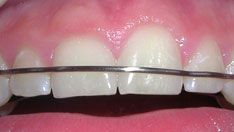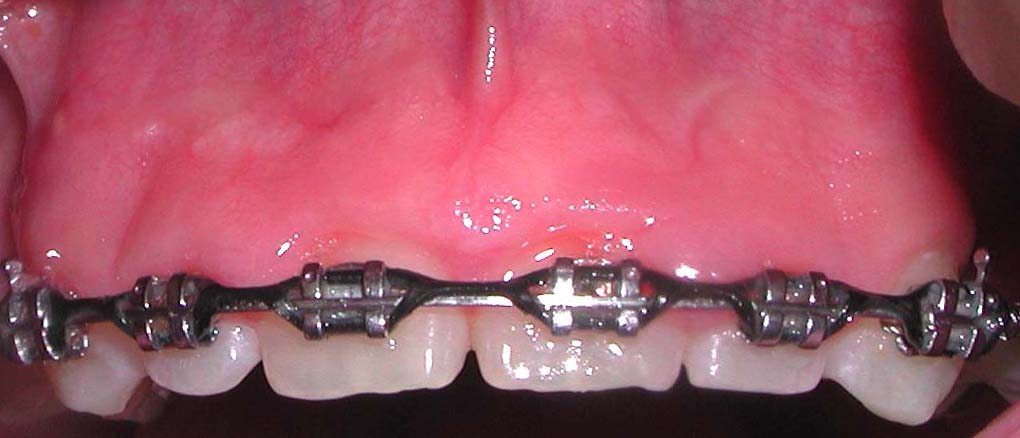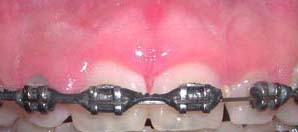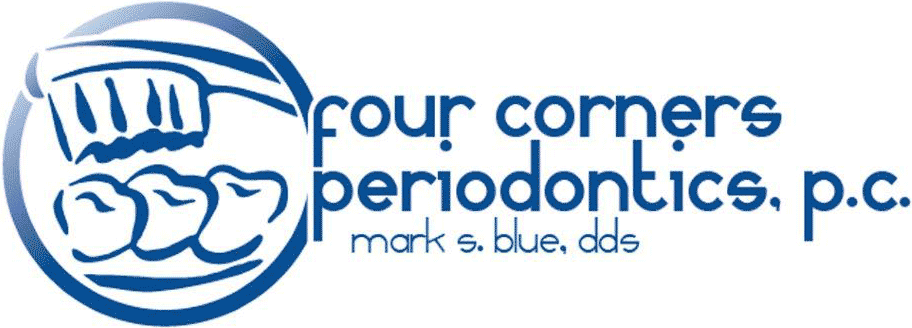Periodontic/Orthodontic Therapy
The last thing you thought your child would need when they got braces was gum treatment. However, there are a few common procedures that your orthodontist might recommend before, in progress, or at completion of orthodontic therapy.
Frenectomy
The muscles of the cheek and lip are attached to the gum tissue of the mouth by a piece of soft tissue called a frenum. Sometimes a frenum can be attached on the gum tissue too close to the teeth causing tissue recession, or actually between the teeth which can contribute to the spaces between teeth.
After orthodontic treatment closes the spaces between the front teeth, a abnormal frenum attachment can push the teeth back apart.
A Frenectomy is a simple surgical procedure in which either part, or all of the frenum is removed. The frenum is then allowed to heal in an area farther away from the teeth.
Before and After Frenectomy
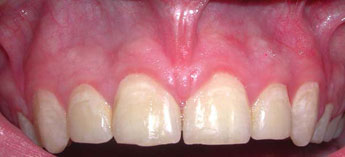

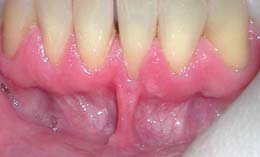
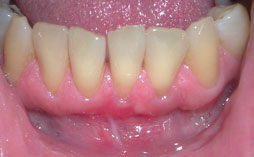
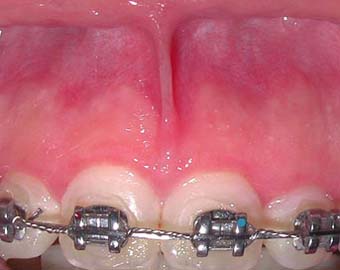
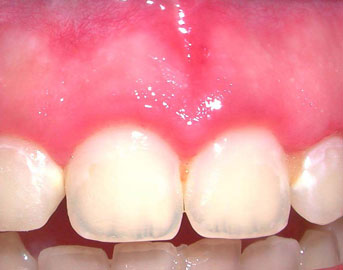
Unerupted Tooth Uncovery
Sometimes teeth do not erupt into the mouth as they should. This can be caused by growth patterns of the jaws, or by retained primary teeth. If the tooth doesn’t erupt on its own, it usually requires orthodontic therapy to move it into normal position. Before orthodontic therapy can begin, the tooth must be unexposed from underneath the gum tissue. Once the tooth is uncovered, orthodontic appliances can be attached and activated. If a retained primary tooth is present, it usually needs to be extracted at the time of uncovery.
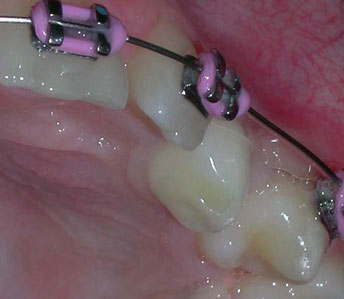
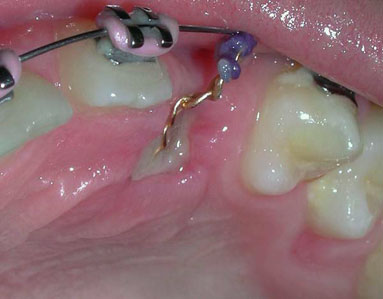
Gingivectomy
Some patients may show too much gum tissue when they smile making their teeth look short, or the gum tissue heights are uneven making the teeth look as if they are different lengths. Your teeth may actually be the proper lengths, but they’re covered with too much gum tissue. To correct this, your periodontist performs a gingivectomy.
During this procedure, excess gum tissue is reshaped to expose more of the natural tooth. This can be done to one tooth, to even your gum line, or to several teeth to expose a natural, broad smile.
